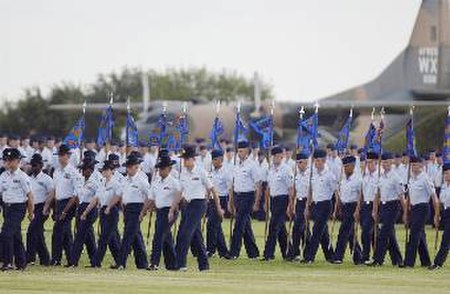Lackland Air Force Base

Lackland Air Force Base (IATA: SKF, ICAO: KSKF, FAA LID: SKF) is a United States Air Force (USAF) base located in Bexar County, Texas. The base is under the jurisdiction of the 802d Mission Support Group, Air Education and Training Command (AETC) and an enclave of the city of San Antonio. It is the only site for USAF and United States Space Force enlisted Basic Military Training (BMT). Lackland AFB is part of Joint Base San Antonio (JBSA), an amalgamation of Fort Sam Houston, Randolph AFB and Lackland AFB, which were merged on 1 October 2010. JBSA was established in accordance with congressional legislation implementing the recommendations of the 2005 Base Realignment and Closure Commission. The legislation ordered the consolidation of the three facilities which were adjoining, but separate military installations, into a single joint base – one of 12 joint bases formed in the United States as a result of the law.
Excerpt from the Wikipedia article Lackland Air Force Base (License: CC BY-SA 3.0, Authors, Images).Lackland Air Force Base
West Military Drive,
Geographical coordinates (GPS) Address Nearby Places Show on map
Geographical coordinates (GPS)
| Latitude | Longitude |
|---|---|
| N 29.388 ° | E -98.6207 ° |
Address
West Military Drive
West Military Drive
78242
United States
Open on Google Maps






